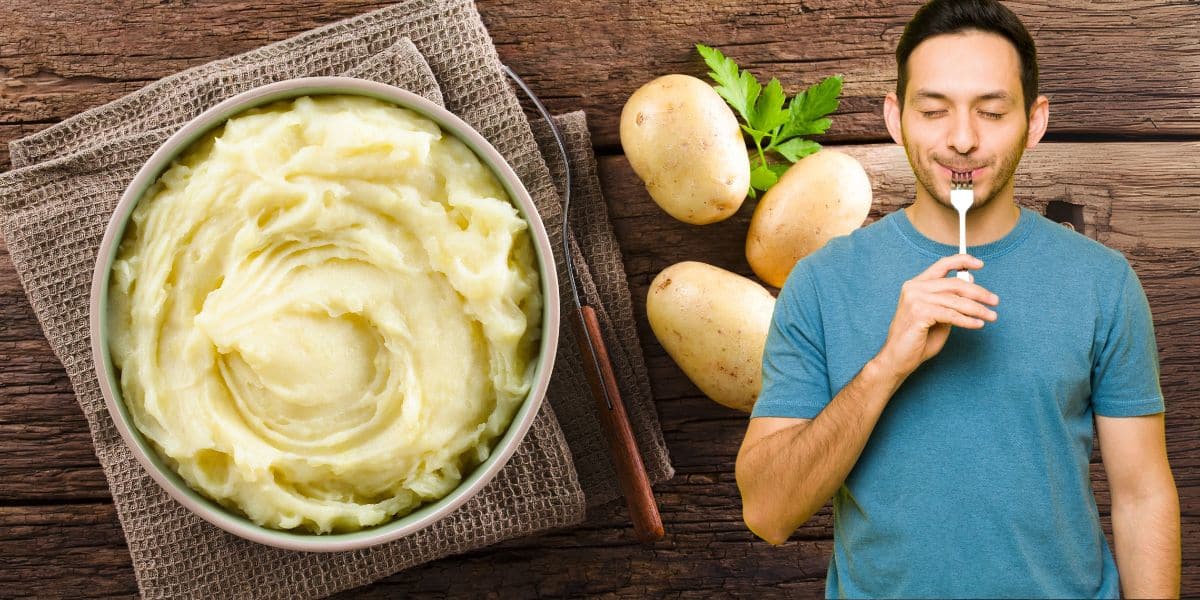Mashed potatoes are a beloved comfort food that can elevate any meal, but achieving that perfect creamy texture can sometimes prove challenging. If you’ve ever found yourself with a batch of runny, soupy mashed potatoes, don’t despair. There are numerous techniques to thicken your mashed potatoes and transform them into a fluffy, delightful side dish. Understanding how to control the moisture and texture of this classic dish is essential for home cooks looking to impress their families and friends.
Understanding the Basics
The key to perfect mashed potatoes begins with selecting the right type of potato. Yukon Gold and Russet potatoes are often recommended due to their high starch content, which contributes to a creamy texture when mashed. It’s essential to avoid starting with hot or boiling water, as this can lead to uneven cooking. Instead, begin with cold water to cover your diced potatoes in a pot. This method ensures an even cooking process, allowing every bite to maintain its integrity and texture.
Once cooked, the next critical step is to drain your potatoes properly. Many novices overlook this, resulting in excess moisture. As you drain, allow your potatoes to sit in the pot for just a moment. The residual heat will help evaporate any lingering moisture. Remember, when it comes to adding liquid such as milk or cream, it’s always better to start with a little and add more as needed. Too much liquid can easily turn your mashed potatoes from fluffy to soupy.
Techniques to Thicken Mashed Potatoes
Using Additional Potatoes
If you’re feeling adventurous, consider using additional potatoes to thicken your mix. This method is straightforward: simply cook and mash an extra potato and then fold it into your existing mashed potatoes. This not only enhances the potato flavor but also improves the overall texture.
Incorporating Potato Flakes
Another quick fix comes in the form of instant potato flakes. If your mashed potatoes turned out too watery, adding these flakes can effectively absorb excess moisture. Start by mixing a tablespoon of potato flakes into your mashed potatoes, gradually increasing until you reach your desired consistency. This technique is particularly popular because potato flakes offer a seamless blend into the dish, maintaining a velvety texture.
Cooking Off the Moisture
Sometimes, all it takes is a little extra cooking. Place your soupy mashed potatoes in a pot over medium heat. Stir them gently every minute, allowing the steam to escape. Leaving the pot uncovered is crucial; it will help evaporate any extra liquid. However, be careful not to over-stir, as this can lead to a gluey texture instead of the desired fluffiness.
Thickening Agents
For those looking to sneak in some added nutrition, incorporating thickening agents like cornstarch or flour can be effective. To do this, prepare a slurry by mixing one tablespoon of starch with two tablespoons of warm water or broth in a small bowl. Gradually incorporate this mixture into your potatoes while stirring gently. This method quickly thickens your mash without changing the flavor significantly.
FAQ on Thickening Mashed Potatoes
Why did my mashed potatoes turn out watery? The most common reason for watery mashed potatoes is adding too much liquid during the mixing process. Additionally, not draining the potatoes sufficiently can also lead to excess moisture.
Can I use cauliflower instead of potatoes? Yes, you can substitute mashed cauliflower for potatoes, but it has a different water content. If you’re opting for this alternative, be sure to follow a dedicated cauliflower mash recipe.
What if my mashed potatoes are still too thick? If you’ve reached a consistency that’s too thick, you can gradually add warm milk or broth to loosen the mixture while stirring gently.
Are there any specific types of milk better for mashed potatoes? Whole milk or heavy cream tends to give the richest flavor and texture to mashed potatoes. However, you can also use alternatives like buttermilk or even vegetable broth for a unique taste.
Can I prepare mashed potatoes ahead of time? Absolutely. To keep them from drying out, store them in an airtight container and reheat, adding a splash of milk to restore their creamy goodness.
Wrapping It Up
Ultimately, mastering the art of thickening mashed potatoes involves understanding the balance between moisture and flavor. By selecting the right potatoes, using proven techniques, and being mindful of your cooking process, you can consistently create the dreamy, creamy mash that enhances your meal experience. Whether experimenting with classic ingredients or unique thickeners, there are numerous ways to turn that soupy mash into a comforting, velvety dish. Remember, practice makes perfect, so keep trying different methods to find what suits your taste best.
Don’t forget to come back for more delightful recipes and tips for your culinary adventures. Share your journey and discoveries, and let others join in on the joy of cooking!





